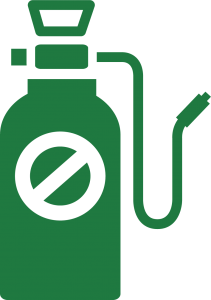
A pest is an organism that causes damage to flora/fauna/humans/timber/homes/monuments and so on. Examples, insects, snakes, wasps, ants, bugs, fleas, ticks, fungi, etc.

Significance of Pest Control
Pest Control Southend is essential to keep our family and society safe and sound. It is quite easy for pests to infest our homes, fields, gardens, and so on and thereby putting our lives at risk as pests like rodents and insects are carriers of deadly diseases. Most of them are carriers of harsh viruses, bacteria, and fungi that will require long-term treatment. Certain rodents may lead to irreparable property damage. Hence it is a necessity to have scientific pest control in order to lead a healthy and hygienic life.
Pest control in Agriculture
The crop production will be severely affected if proper pest control measures aren’t adopted. The quality and quantity of crops produced depend on the extent of pest control measures undertaken by the farmers. Pest control simply doesn’t mean complete elimination of rodents or pests, but it involves selecting clever procedures leading to restoring balance in the ecosystem. Farmers make use of umpteen cultural, chemical, and biological measures to control pests in agricultural fields. Ploughing and cultivation of soil help to get rid of weeds. Crop rotation is a technique that can keep pests at bay. Biological pest control involves the use of natural enemies of the pests to combat the pests. Breeding of such varieties is done in the laboratory. Mechanical pest control can be done by making use of a protective wall/barrier between the crops and insects (tillage).
Pros and Cons of Pesticides in Pest Control
The use of pesticides has definitely increased the crop production ratio as they have successfully controlled micro pests like armyworm, cutworm, aphids, etc. There is a tremendous increase in the use of organic pesticides. The chemicals used in inorganic pesticides are quite toxic and their traces may be found on crops which can lead to hazardous health situations. The use of pesticides can be a burden because of the expenditure and the labour force involved.
Identification of Pests in Pest Control
In order to carry out pest control successfully, it is necessary that the pests are identified accurately so that a proper methodology of pest control could be planned and executed. Priority should be given to reduce the pest number and little or no harm should be caused to anything except the pest. The P-S-E formula (Prevention-Suppression-Eradication) could be followed for pest control. A proper strategy could be used once the nature of the pest is identified. For example, certain pests may not withstand extreme temperature conditions and this could be used as a tool to destroy the pests locally. Host resistance is a principle that is widely used nowadays to destroy pests by making use of the resistant hybrid variety crops.
Integrated Pest Management
IPM is an approach that depends on a collaboration of different techniques used in a comprehensive manner leading to an effective pest control mechanism. The IPM approach can be used in agricultural and nonagricultural areas. This program works to prevent the spread of pests before it becomes a threat. It is cost-effective also. The judicious use of pesticides leads to the least possible hazard to people and nature.

